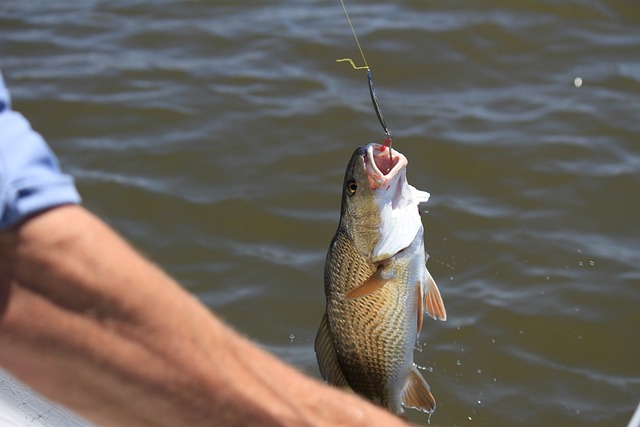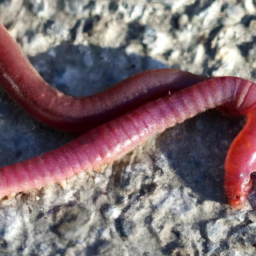In this article, you’ll learn about the different types of lures that are most effective for freshwater fishing. We’ll discuss the various factors that determine the success of a lure, as well as provide some recommendations for specific types of lures that have proven to be effective. Whether you’re a beginner or a seasoned angler, this article will give you the information you need to improve your fishing game.
When it comes to freshwater fishing, the type of lure you use can greatly impact your success. Different lures are designed to attract different types of fish, and understanding which ones to use in different fishing conditions is essential. We’ll dive into the various types of lures, including spinners, crankbaits, soft plastics, and jigs, and explain when and where they are most effective. By the end of this article, you’ll have a better understanding of which lures to use to enhance your chances of catching the fish you’re after. When it comes to freshwater fishing, using the right lure can make all the difference in catching that prized fish. With so many options to choose from, it can be overwhelming to know which type of lure is most effective. In this article, we will explore the different types of lures available, including artificial lures, live bait, and natural baits. We will also discuss factors to consider when choosing a lure, such as water conditions, fish species, and the time of year.
Artificial Lures
Artificial lures are designed to mimic the movement and appearance of natural prey, attracting the attention of freshwater fish. These lures come in various shapes, sizes, and colors, making them versatile for different fishing techniques. Here are some popular types of artificial lures:
Soft Plastic Baits
Soft plastic baits, such as worms, grubs, and crawfish, are a common choice among anglers. They are known for their lifelike action in the water and can be rigged in different ways to imitate various prey. Soft plastic baits work well for a variety of freshwater fish, including bass, trout, and panfish.
Crankbaits
crankbaits are designed to imitate injured or fleeing baitfish, making them highly effective for predatory fish. They typically have a hard body with a diving lip that controls their depth in the water. Crankbaits come in different diving depths, including deep diving, shallow diving, and lipless variants. The choice of crankbait depends on the target species and the fishing conditions.
Spinnerbaits
Spinnerbaits are versatile lures that consist of one or more spinning blades attached to a wire frame. They create flash and vibration in the water, mimicking a wounded baitfish or a small prey. Spinnerbaits can be retrieved at various speeds and depths, making them effective for a wide range of fish species.
Live Bait
Live bait, as the name suggests, involves using live organisms as bait to attract fish. While it may seem old-fashioned, many anglers still swear by the effectiveness of live bait. Here are some common types of live bait used in freshwater fishing:
Nightcrawlers
Nightcrawlers, also known as earthworms, are one of the most popular choices for live bait. They can be easily obtained or even collected yourself. Nightcrawlers are effective for a wide variety of freshwater fish species and can be used in different fishing techniques.
Minnows
Minnows, which are small fish, are another popular live bait option. They are widely available at bait shops and can be used to target predatory fish such as bass, pike, and walleye. Minnows can be fished using a variety of techniques, including under a bobber or on a jighead.
Leeches
Leeches are commonly used as live bait for fishing. They have a wiggling, enticing movement that appeals to many fish species. Leeches can be fished using a hook or a leech harness and are particularly effective for walleye, bass, and panfish.
Natural Baits
Natural baits are non-living substances derived from the natural environment that fish commonly feed on. While they may not have the same realistic movement as artificial lures or live bait, they can still be highly effective in certain situations. Here are some examples of natural baits used in freshwater fishing:
Worms
Worms, such as garden worms or marsh worms, are a classic and reliable bait for freshwater fishing. They can be fished on their own or used in combination with other baits. Worms are particularly effective for catching panfish, trout, and catfish.
Insects
Insects, such as grasshoppers, crickets, and beetles, are natural prey for fish and can be used as bait. They can be found in the wild or purchased from bait shops. Insects are especially effective for fishing in streams and rivers where they are naturally present.
Crawfish
Crawfish, also known as crayfish or crawdads, are sought after by many freshwater fish species. They can be obtained by trapping them or purchasing them from bait shops. Crawfish can be fished using a variety of techniques, including on a jighead or under a bobber.
Factors to Consider
When choosing a lure for freshwater fishing, there are several factors to consider to increase your chances of success. Here are some important factors to keep in mind:
Water Conditions
The clarity of the water, presence of vegetation, and depth can all affect which lure will work best. In clear water, lures that closely resemble natural prey are more likely to attract fish. In murky water or areas with heavy vegetation, lures with bright colors or strong vibration may be more effective.
Fish Species
Different fish species have different feeding habits and preferences. Understanding the target species will help in selecting the appropriate lure. For example, bass are often attracted to crankbaits or soft plastic baits, while trout may be more enticed by live bait such as worms or insects.
Time of Year
the time of year can impact fish behavior and their preferred food sources. During spawning season, fish may be more aggressive and territorial, making crankbaits or spinnerbaits effective lures. In colder months, slow-moving soft plastic baits or live bait may be more successful.
Conclusion
In conclusion, the effectiveness of a lure for freshwater fishing depends on various factors such as water conditions, fish species, and the time of year. The choice between artificial lures, live bait, or natural baits ultimately comes down to personal preference and the specific fishing situation. The key is to experiment with different lures, techniques, and presentations to find what works best for you. Remember to always check the fishing regulations in your area and practice responsible catch-and-release practices when necessary. Happy fishing!


